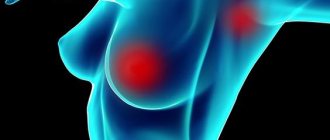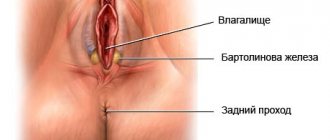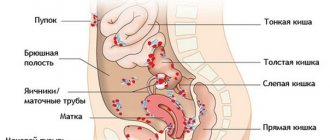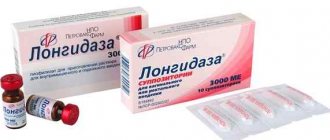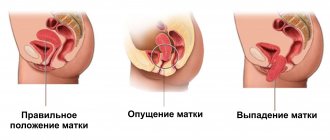Breast cancer after surgery
- Breast conserving operations for cancer occur without oncoplasty (when up to 15-20% of the gland volume is removed). They are also called lumpectomy, tylectomy or radical sectoral resection. About such operations (with photos) see here:
- Breast surgery for cancer with oncoplasty (when breast conservation surgery for cancer is combined with a breast lift or reduction). In this case, from 15 to 70% of the gland volume is removed and the oncological operation is “masked” as plastic surgery. Breasts look better after surgery than before surgery. Performing such operations requires skills in plastic surgery. About such operations (with photos) see here:
- When it is impossible to preserve the breast: when it is impossible to preserve the mammary gland, an operation to remove the breast with its simultaneous restoration is proposed. See such operations (with photos) here:
| When 80% of the mammary gland is removed, we immediately perform its one-stage reconstruction (according to quotas for residents of all regions of the Russian Federation) |
Breast conserving surgery for cancer can be performed if:
- No swelling of the breast skin
- No diffuse microcalcifications on mammogram
- There are no contraindications to radiation therapy
- After tumor removal it will be possible to achieve an acceptable aesthetic result
Photo of the report at the 5th International Breast Symposium (April 28-29, 2020) in Dusseldorf: Removal of breast cancer at a distance of 1-2 mm from the tumor and radiation therapy gives the same result as a mastectomy.
Subtype of the tumor (its degree of malignancy, IHC status: ER, PR, Ki-67, Her2/neu), Central localization of the tumor (under the nipple), Multiplicity of tumor nodes in the mammary gland, Presence of metastatic nodes in the armpit.
All these factors do not affect survival: the results are the same for those who had their breasts preserved and those who had a mastectomy. Those who do not know this are those who do not have the opportunity to attend such conferences and study.
During surgery to remove a malignant tumor, a drainage is installed. Most often, it is removed after the daily amount of discharge from it for 2-3 days in a row is less than 50 ml per day.
Typically, a seroma—an accumulation of lymph or serous fluid—is noted in the armpit at the edge of the pectoralis major muscle. It appears after the drainage is removed: before this, this liquid flows through it. The reason for the appearance of seroma is impaired venous outflow from the muscles due to damage to its veins: blood flows into the muscles through the arteries, and the veins are crossed.
The liquid part of the blood “sweats” from the muscle and accumulates nearby. This is not a serious complication or defect in the operation. If the doctor knows how and wants, he can (showing virtuosity of surgical skills, using magnifying glasses and special instruments) isolate and preserve veins from the muscles in the operation area, removing only lymph nodes and fatty tissue. This work is not mandatory for such operations.
Sometimes seromas accumulate under the remaining breast skin. Typically this occurs when there is excess skin left behind. Oncologists also do not consider this a defect in the operation, but depend on the doctor’s experience.
If the fluid stagnating in the seroma does not become inflamed, and its quantity is up to 50 ml, it can be left alone. Over time, the tension in it will disappear on its own. Only its fibrous capsule will remain, causing no problems. If there are signs of seroma inflammation, antibiotics are prescribed and fluid drainage is ensured (punctures or punctures are used to pump out fluid, drainage (tube) is installed, a fenestration or incision is made so that the fluid flows into a bandage that the patient can change).
Exercise therapy after oncological surgery on the mammary gland - mastectomy, organ-preserving surgery is not recommended for the first 2-3 days due to the risk of bleeding. After removal of the drainage, during the first days it is not recommended to perform active movements of the arm in the shoulder joint on the side of the operation. In case of seroma, exercise therapy provokes its accumulation.
See a set of physical therapy exercises HERE.
Chemotherapy, as well as radiation after surgery, can be started within a week after removal of the drainage (if lymph does not accumulate in the surgical area). If you have undergone punctures to remove lymph, it is better to postpone chemotherapy until the lymphorrhea stops, since chemotherapy (radiation therapy) will significantly increase the healing process. Read more about chemotherapy after surgery HERE.
Radiation is carried out after chemotherapy, and if chemotherapy is not needed, also a week after removal of the drainage in the absence of lymphorrhea.
Hormone therapy is carried out after completion of radiation therapy.
Breast amputation, regardless of typology, is a complex invasive intervention. You will have to spend about a week in the hospital, then the patient will have a recovery period lasting up to 3 months. After a mastectomy without plastic surgery, the operated patient will stay in the clinic for 4 days. In the first month, visits to the inpatient department are required for regular dressing changes and examinations.
When the anesthesia wears off, severe pain begins, lasting about 4-6 days. During this period, painkillers are usually prescribed. The patient must wear a drainage system for a week. Since you are sometimes discharged home with tubes attached to your body, the nurse will tell you in detail how to avoid damaging the device and dressing.
Disability after invasion is due if the diagnosis that led to the mastectomy is breast cancer. The intervention is followed by mandatory chemotherapy and radiation therapy, the consequences of which deprive the woman of her ability to work. Usually the patient is assigned a second disability group with re-examination after a year.
The postoperative period does not always go smoothly. Complications may appear immediately or later, and there is also a risk of relapse. Life after a mastectomy is often overshadowed by psychological worries, doubts about one’s own attractiveness, and the expectation of potential disability. If depression occurs, you will need the help of a psychotherapist.
Complications of mastectomy more often occur in elderly, chemotherapy-weakened, and obese patients. Within 3–4 days, bleeding and lymphorrhea are observed, sutures come apart, necrotic tissue damage, and purulent inflammation are observed. Later, phantom pain appears, disruption of venous and lymph flow, swelling, loss of sensitivity, keloid scars form, and limb movements are distorted.
Relapses of cancer occur six months to a year after mastectomy. Most often they occur if the operation was performed in the late stages of cancer due to incorrect diagnosis, refusal of radiation therapy, or the presence of active metastasis. After 5 years, cancer can be considered defeated.
It is important to follow the doctor’s recommendations even after the postoperative period. Contraindications after invasive mastectomy:
- No sex for three months.
- Do not take hot baths.
- Avoid saunas and steam baths.
- You can't get pregnant for three years.
- Holidays at sea for 3 years are not advisable.
- Do not lift weights exceeding 1–3 kg.
- Smoking and drinking alcohol are contraindicated.
- Sharp bends and raising of arms are excluded.
A salt-free diet is recommended, excluding fatty and smoked foods. The support of relatives is crucial in the rapid recovery of the operated patient.
Surgery to remove the mammary gland is performed at any stage of the cancer process, regardless of the presence or absence of metastases. Breast removal can be complete or partial. Partial removal or organ-saving surgery is performed for stages 1 and 2a of the tumor process.
Varieties of radical mastectomy are performed from stage 2B to stage 4. Radical intervention is also indicated for the initial stages of breast cancer with tumor growth into the fascia or pectoralis major muscle. The operation is performed when metastatic lymph nodes grow to the pectoralis minor muscle.
After removal of the mammary glands, you can achieve stable remission of the cancer or complete elimination of it. Surgery is usually well tolerated by patients, without complications in the postoperative period. The first three weeks after surgery are an early rehabilitation process with possible manifestations:
- coarsening of the skin in the armpit area, its tension;
- pain at the site of postoperative sutures;
- discomfort and pain when moving your arms;
- swelling in the chest area due to local lymphostasis.
Rarely are these phenomena permanent; they disappear with the beginning of active rehabilitation. Unpleasant consequences and complications of mastectomy are infectious processes at the wound site. Possible suppuration of the sutures, bleeding and hematomas, as well as infection in the subcutaneous tissue. Tumor dissemination rarely occurs if it is excised incorrectly during surgery.
https://youtu.be/czr3J7qxEwY
Rehabilitation
The postoperative period is sometimes characterized by the presence of complications:
- Enlargement of the arm is a consequence of impaired lymph drainage due to the absence of the usual number of lymph nodes. The arm can grow up to 3 centimeters. If the situation is out of control and the increase significantly exceeds the norm, the lymphatic system should be “unloaded”.
- Heaviness in the armpit area, which can appear both in the first weeks and several months after surgery. The complication is far from critical and is quite capable of disappearing on its own. However, doctors insist on conducting a course of physiotherapeutic procedures.
- Lymphedema is swelling of the arm adjacent to the site of breast cancer surgery. Typically, the first manifestations of this complication are observed in the late period after surgery. Disturbed lymph flow blocks the lymphatic system, which provokes the occurrence of edema. Excess fluid will drain away during dressings, and then the body will independently find other ways for lymph outflow.
- Numbness of the skin on the arm - in this case, the explanation may be a cutaneous nerve damaged during surgery. As a result, the sensitivity of the skin decreases.
- Limited arm movements – occurs when lymph nodes in the armpit are removed. This symptom is best treated with physical therapy. The doctor will give recommendations regarding massage and exercises in order to develop the arm.
Patients in the postoperative period are advised to give up bad habits, eat a balanced diet, establish a regular daily routine and get proper rest. With radical removal of the mammary gland, plastic surgeons offer breast reconstructive surgery, which has a positive effect on the woman’s emotional state and allows her to quickly return to her previous lifestyle.
Indications
Removal of the mammary gland is recommended in 97% of cases for females; men are much less likely to be affected by breast cancer. Indications for prescribing a mastectomy are the following diseases:
- Oncological degeneration of breast tissue.
- Sarcoma of the gland.
- Phlegmonous or gangrenous mastitis.
- Multiple nodes in the chest.
- Mastopathy of fibrocystic type.
In these cases, a competently performed operation saves a woman’s life. In men, mastectomy is performed for gynecomastia. The peak incidence occurs at 50–65 years of age, but older patients also suffer from breast cancer - the disease can strike at 75 and 87 years of age. The older the woman, the more difficult the operation and rehabilitation period are. Similar interventions are performed on female animals; this type of invasion is called unilateral mastectomy.
Patient reviews
Irina Kashevarova: I have been fighting breast cancer for 9 years now. I started this fight in Israel, where I was operated on and had my first chemotherapy. Then there were several other medications. In my now “professional” opinion, everything was done efficiently and I was treated by great doctors, and Professor Inbar is still treating me, but now I don’t leave Moscow. The world turned out to be small, when I asked on the phone almost 9 years ago my doctor friend from the USA, who had gone there a long time ago, where I should do procedures with medications, he advised me of his friend Dr. Aronov, and when, having found out, he gave the address, it turned out that it was in my yard. Incredible. Yes. Now the relapse is again, I’m already tired of fighting, but I’m only 44 years old and I’ll still do it. Everyone at the Medis clinic and Dr. Sasha himself help me immensely in my life.
Zhanna Asherova: We immediately began to treat my mother to the maximum, having studied the entire “market” of medical services. We sold the apartment that we were renting out and invested everything in treatment. I literally became almost a professor at the Russian Medical Journal. And now, looking back, I understand that I didn’t do everything right. It was wrong to follow the Soviet path, and the oncology center of the Soviet spill is a Soviet one. Yes, we found the best surgeon there, we organized everything so that the operation could be performed. But after hanging around there, they went to a private clinic, first to one, but from there they immediately moved to Medis. And I didn’t regret it for a second.
Lymph node surgery
- or immediately remove them completely (it doesn’t matter whether they are affected or not)
- or checking them for metastases and, only if a sentinel node biopsy reveals that they are affected by metastases, removing them.
A biopsy of the sentinel node is done only if before surgery, according to the results of examinations (CT, MRI, ultrasound), no signs of damage to the lymph nodes were found (N0).
Forecasts for breast cancer SEE HERE
Metastatic damage to the lymph nodes in breast cancer: No, N1 and N2 is not a contraindication to breast-conserving surgery.
Possible complications
Like any surgical intervention, surgery to excise a breast tumor in women can have consequences such as bleeding and infection. More than half of women experience pain in the chest, shoulder, and armpit.
Pain may also appear after the puncture. With sectoral resection, pain may also remain and become chronic. Typically, women complain of increased sensitivity in the operated area.
There may also be a risk of improper scarring. In rare cases, skin cells may die at the surgical site, leading to the need for surgical intervention. Often, with sectoral resection, women experience a cosmetic defect, since the shape of the mammary gland changes and asymmetry appears.
In some cases, when lymph nodes are removed, women experience pain in the armpits, sometimes a feeling of numbness, and swelling. Damage to nerve fibers and inflammation of the hand tendon may occur.
Risks include the use of general anesthesia. Undesirable effects include the appearance of hypotension, bradycardia, and allergic reactions to drugs.
Preparing for surgery
Removal of the mammary glands is preceded by a lot of tests and the use of hardware methods, on the basis of which the doctor concludes that there is a pathology that requires surgery:
- Blood and urine analysis.
- Mammography.
- MRI of the affected area.
- Taking a biopsy sample.
- ECG.
- Fluorography.
A thorough examination and detailed questioning of the patient by the treating mammologist is required. The health care provider should be informed about allergies to any drug or anesthetic, about taking any medications, including herbal remedies, vitamins and dietary supplements, the presence of chronic diseases and previous illnesses.
Immediately 12 hours before the mastectomy you should not eat, 2 hours before the mastectomy it is not recommended to drink, and the day before you must have a cleansing enema. You should also consider who will pick up the patient from the hospital and care for her during the postoperative period.
Postoperative period
As soon as the woman awakens from general anesthesia and her condition has stabilized, she is transferred to a regular ward. Within a few hours after the operation, you are allowed to walk, the main thing is not to get up abruptly.
Dressing is carried out once every few days, in addition, the woman takes painkillers throughout the entire period. After a mastectomy, 2-3 drains are usually left in the wound, which are removed after a few days.
As a rule, sutures do not need to be removed; after some time they dissolve on their own. If lymph nodes were removed during surgery, the woman is prescribed treatment with biological drugs or a course of chemotherapy.
Types of surgical interventions
Previously, surgery to remove the breast was carried out in the only way - the gland tissue was radically excised together with all adjacent components. Now it is not necessary to use the total invasion method according to Halstead-Meyer - more gentle types of interventions have been developed:
- Partial mastectomy.
- Modified radical interventions.
- Preventive surgery.
The choice of invasive penetration depends on many factors: the stage of the disease, the degree of its development, age, hormonal status. The general condition of the patient’s body and the timing of menopause (for older patients) are taken into account.
This type is used in women with stages 1 and 2 of breast cancer, purulent mastitis and mastopathy with changes in fibrous tissue and the formation of multiple cysts. The essence of sectoral intervention is to remove the area of tissue affected by the disease without affecting the adjacent ones. There are three types of mastectomy of this type:
- Lumpectomy. The tumor and a small percentage of tissue are removed.
- Segmentectomy. A larger fragment of the breast is excised.
- Quadrantectomy. A quarter of the breast gland will be removed.
For breast cancer, after any type of regional excision, radiation therapy is prescribed. Its goal is to kill the remaining pathological cells. But relapses still happen - in such cases, the mammologist decides on radical removal of the mammary gland.
This type involves complete removal of the mammary gland, excision of all types of pectoral and axillary muscles, and fatty tissue under the scapula. Radical Halstead surgery involves cutting out the lymph nodes, nipple and skin layer. The method is used for aggressive forms of breast cancer if sectoral resection does not produce results; it is also used for active metastasis and muscle damage, as part of palliative therapy.
Preventive surgery is performed less frequently - the need for it arises in case of hereditary genetic failure (BRCA mutations). This method has been used more than once by famous people, for example, a preventive bilateral mastectomy with one-stage plastic surgery was performed on Angelina Jolie. The volume of surgical invasion varies - it is carried out with the removal of muscles, nipple and damaged dermal tissue and without excision of the latter two. If the risk of breast cancer is high, then after prophylactic resection it is reduced by more than 90%.
Women with removed breasts resort to such an intervention so that the cancer does not spread to the second mammary gland, because relapses are common. During the operation, immediate or subsequent breast reconstruction using implants and the patient's own skin is possible. This subsequently relieves the woman of psychological discomfort after a unilateral or double mastectomy. Before and after restoration, the breasts look as shown in the photo.
According to Madden
The least traumatic and small in terms of invasion volume is a modified radical method, in which the tissue of the affected breast, fascia, partially the tissue under the scapula, armpit and lymph nodes are removed to the second level. Both types of pectoral muscles and type 3 lymph nodes remain intact. This technique is used in the Russian Federation in the early stages of cancer detection.
The Patey-Dyson operation is a modified, gentle method of removing the mammary gland, which belongs to the group of radical interventions and involves complete excision of breast tissue, the small muscle mass and partially fatty tissue. A large muscle mass is preserved. Lymph nodes of types 1–3 are also removed, but not all, but only those affected by cancer.
Endoscopic mastectomy is the latest technique for performing breast removal surgery using a special device. Punctures are made in the cancerous gland and the required amount of tissue is removed through them under the control of an endoscope. Therefore, this method is suitable for any type of intervention.
Removal of the mammary glands for cancer occurs taking into account the location of the tumor, as well as the condition of the adjacent lymph nodes. The “sentinel” axillary node is always removed. The operation can be performed on one or both sides. Practice shows that the larger the extent of excision, the lower the likelihood of cancer recurrence.
Organ-saving operations are more gentle. They involve excision of tumor-affected tissue with an indent (including healthy tissue) of at least 1 centimeter. Radical operations involve healthy tissue on a large scale, and additionally excise the pectoral muscles (major or minor, sometimes both).
Lumpectomy
Lumpectomy is a type of sectoral resection. The main incision can be made from the nipple to the edge of the breast or directly around the tumor. Sometimes two small incisions are made. An additional incision is made at the site of projection of the first-order lymph nodes - near the armpit.
The second name of the operation is tumorectomy. It allows you to save breast tissue, as well as the nipple (if the pathological process is not localized in it). Lumpectomy also involves lymph node dissection (excision of nearby level 1–3 lymph nodes).
Quadrantectomy
Quadrantectomy is also an option for sectoral breast resection. One sector containing the tumor is removed. The distance from the edge of the tumor in such an operation is 3 centimeters. Additionally, the fascia of the pectoralis major muscle and a package of 1st-3rd order lymph nodes are removed. With this operation, access is made using two incisions even to the medial sector.
Mastectomy
Mastectomy is a radical operation that involves complete removal of the mammary gland. Additionally, nearby lymph nodes are removed. It is also effective for non-invasive forms of cancer (lobular, ductal). This is the operation of choice when cancer has grown into the pectoralis major or minor muscles. There are a number of intervention modifications:
- According to Halsted - excision of the breast, both muscles, fatty tissue from the armpits, scapula and collarbones, and lymph nodes.
- According to Urban - a more radical intervention (Halstead operation with removal of parasternal lymph nodes).
- According to Patey, removal of the breast and lymph nodes while preserving the pectoralis major muscle.
There is also an extended modification of the operation. It is traumatic for the patient and is performed only in the fourth stage of cancer, near metastasis to the chest frame. Not only the mammary gland with lymph nodes, tissue, and muscles is removed, but also part of the hard chest frame. After the operation, visible defects of the chest remain. An advanced mastectomy involves making an incision around the nipple and completely amputating the gland.
Progress of the operation
The operation to remove the tumor is performed under general anesthesia. The surgeon, as a rule, tries to make incisions so that cosmetic defects are minimal. Then the formation is removed. Most often, the tumor is removed along with nearby tissues, which is necessary to reduce the risk of re-development of the oncological process,
which can occur if malignant cells remain in the breast tissue. At the end of the operation, the tumor is sent for examination.
Also, during the operation, part of the axillary lymph nodes are often removed, which are also sent for examination to determine the extent of the spread of the malignant process. This procedure is important for determining the stage of cancer and assessing the chances of recovery, since metastasis, as a rule, primarily occurs in the lymph nodes.
The operation during which a tumor is removed in women from the mammary gland (lumpectomy) usually lasts no more than 2 hours. For a mastectomy, the procedure takes about 3 hours.
Breast surgery
Organ-conserving surgery can be done for stage T1 and T2 breast cancer (tumor size up to 5 cm).
Organ-conserving surgery is also possible for tumors larger than 5 cm in a large gland, or a large tumor can be reduced with chemotherapy or hormone therapy.
| About breast restoration after a mastectomy (done earlier) see HERE |
We admit patients to the hospital after a complete examination so that the operation can be performed the next business day. On the day of hospitalization, patients fill out a medical history and are located in the department; they and the results of their examinations are examined by a department doctor, an anesthesiologist; a commission discussion of the operation plan and subsequent treatment is carried out.
The day before the operation, the patient can eat food (breakfast, lunch, dinner), in the evening until 21:00 you can drink liquid without restrictions. After 21:00 and on the morning of the operation, drinking liquids and eating food is strictly not recommended: during anesthesia, the contents of the stomach may flow into the mouth - the patient risks choking. Of course, they will save him, but it is not wise to provoke complications yourself.
In the evening, it is advisable to take a shower and remove vegetation on the skin in the operation area.
Before surgery, our nurses will help the patient put on compression stockings or wrap their legs with elastic bandages.
Symptoms of breast cancer
Each woman should conduct an independent examination of her mammary glands every month, on days 6-8 of her cycle, and if suspicious signs are detected, immediately consult a doctor. What should you be wary of?
- the presence of any lumps, nodules in the chest, under the armpit;
- nipple discharge, inverted nipple effect;
- redness, hardening of the skin, swelling;
- breast asymmetry, deformation that has not previously been observed;
- enlarged veins.
Remember that in the initial stages there may be no symptoms at all, so you need to visit a doctor every 6-12 months even if there are no complaints. At Medis, you will be guaranteed assistance from the most competent doctors in the field of diagnosis and treatment of breast cancer, so do not hesitate, call us and make an appointment with a specialist.
Treatment of breast cancer with folk remedies, as various websites offer: mushrooms, herbal tinctures, poisons, propolis and other “remedies” have only placebo effectiveness. However, the patient's positive mood can have a beneficial effect. Many patients try to treat breast cancer with folk remedies, but this exercise is completely useless. Evidence of the benefits of such treatment based on the fact that “my friend’s grandmother cured this” has no evidence base. High-quality treatment for breast cancer can completely cure the disease at an early stage, or prolong the patient’s life for many years. Using folk remedies will only lead to quick death.
Reviews
“Mom was operated on for breast cancer 20 years ago. The memories of this were erased, the disease receded, because the mastectomy was done on time and supported by chemotherapy.”
Yulia, 45 years old, Vladivostok
“At the age of 30, I was diagnosed with stage 1 breast cancer. They suggested a mastectomy. I didn’t agree until the oncology developed into the 2nd degree. After the operation there were two sessions of “chemotherapy” and radiation intervention. I’ve been living for 7 years after a mastectomy.”
Violetta, 37 years old, Moscow
Causes of breast cancer development
It is still unknown exactly why breast cancer occurs. However, there are risk factors that increase your chance of getting sick. These primarily include hereditary predisposition, namely the presence of mutations in the BRCA1 and BRCA2 genes. Therefore, we strongly advise all women whose close relatives (mother, sisters, aunts, grandmothers) have suffered from breast cancer to undergo appropriate genetic tests as early as possible and to be regularly examined by a mammologist. Other risk factors include the absence of children or late - after 35-40 years - childbirth, breast injuries, radiation exposure, alcohol or tobacco abuse, diabetes mellitus, early onset of the menstrual cycle and late onset of menopause. The presence of these moments does not mean that you will definitely get sick, you just are at risk and you need to monitor your health more closely.
How is surgery performed for breast cancer?
When the skin over the tumor is not compromised in any way and is mobile, it does not need to be removed. Then the incisions can be made not above the tumor, but nearby (so that later they will be less noticeable). During oncoplastic surgery, skin incisions are made according to preliminary markings so that after performing oncological surgery, plastic surgery can be performed on them.
When removing the tumor itself, the operation is performed “with a margin” (about 1.0 cm). If this “reserve”, when examined under a microscope, turns out to be smaller (up to 1-2 mm), this will be sufficient and a wider excision will not be required.
Breast cancer surgery price
The use of modern equipment and consumables during surgery reduces the risk of possible complications.
The operation under the compulsory medical insurance policy (for breast cancer) is paid by the insurance company in the amount of about 21,000 rubles. This money is used to organize the patient’s meals, wash bed linen, provide consumables for anesthesia, surgery, dressings and post-operative care, and staff salaries. It is clear that with such financing you can only claim the most inexpensive components.
| You can see more information about consumables for the operation HERE |
When treated under a VHI policy, more funds are provided, which allows you to use more modern consumables and achieve better aesthetic results. However, for breast cancer, the VHI policy is valid only for a very small number of insurance companies (read carefully the conditions for the occurrence of an insured event).
Quota operation
A “quota” operation implies that the state allocates funds in a separate line from the budget to ensure it. The volume of these funds exceeds the amount that goes to a medical institution for performing similar treatment under the compulsory medical insurance policy.
In order to treat a patient under a quota, his doctor must (in addition to his main work) draw up a package of documents and “prove” that the case is suitable for one or another option of high-tech medical care (HTMC). According to the VMP-OMS quota - for breast conservation surgery - the institution receives about 115,000 rubles. Obviously, this option provides more expensive consumables than for treatment under the compulsory medical insurance policy.
The quota for the operation “mastectomy with simultaneous prosthetics” is more expensive (about 250,000 rubles), but requires a longer registration process - up to 2 weeks.
How a quota is issued and how to get it for residents of St. Petersburg and non-residents SEE HERE
Combining simultaneously different types of VMP, compulsory medical insurance and paid treatment in one patient is not provided.
Plastic surgeries are carried out only on a paid basis. An exception is breast reconstruction for cancer (performed according to the VMP quota). Read more about this HERE.
Sports, cottage, sea after mammary gland removal
Exercising is beneficial for the physical and mental health of women after completion of treatment. Swimming and water aerobics, Nordic walking are especially suitable. Avoid sports that involve repeated energetic, counteracting movements of the hand on the side of the operation (tennis, etc.), strong temperature fluctuations (skis, skates). It is also better to exclude traumatic sports, basketball, volleyball, wrestling.
Wear gloves when doing housework, gardening, or other work that may cause even minimal damage. Try to avoid any injury to the arm on the side of surgery (bumps, cuts, sun or other burns, sports injuries, insect bites, scrapes). Traumatization of the skin of the operated hand is dangerous due to infection and the development of erysipelas.



